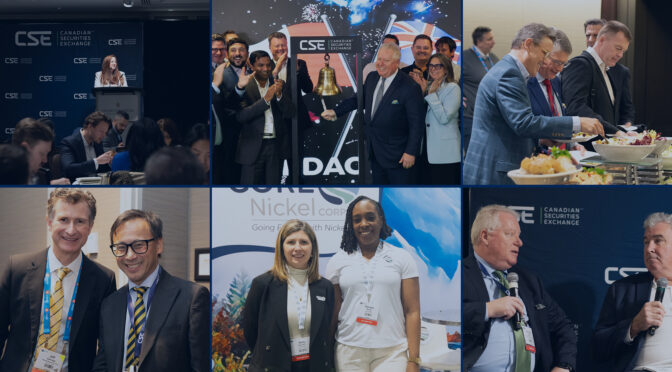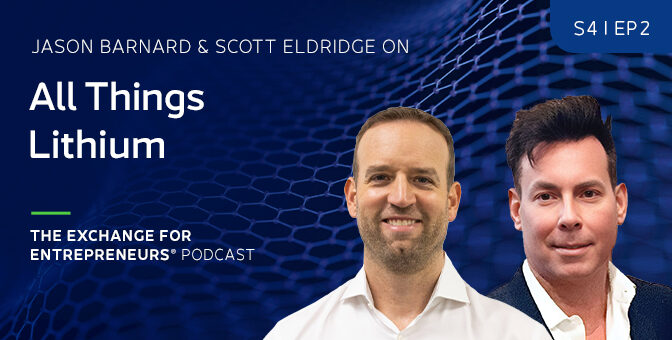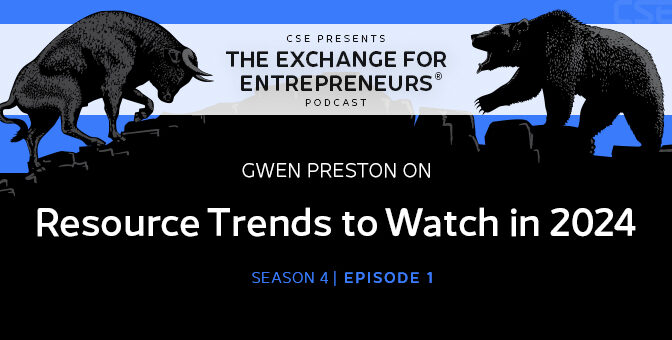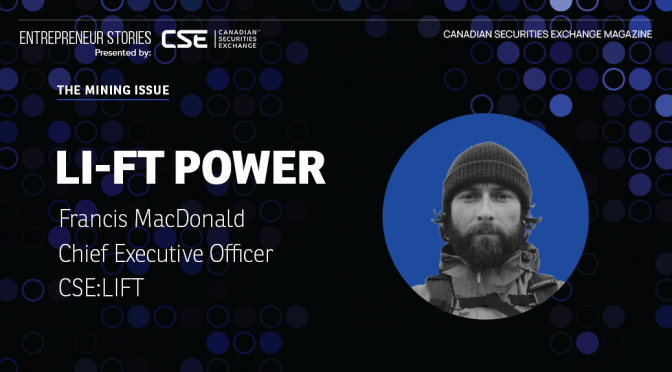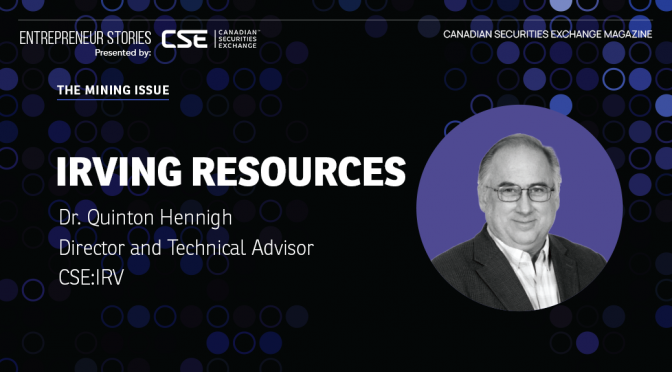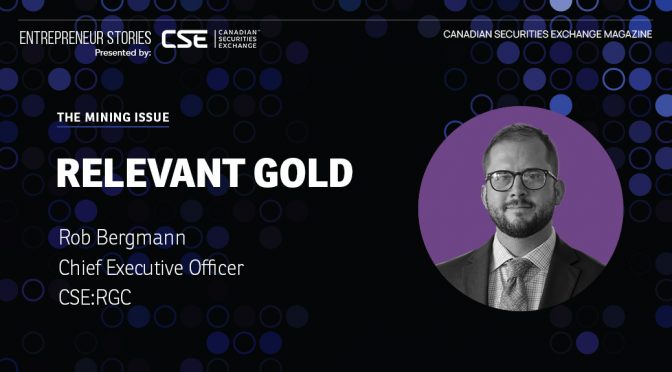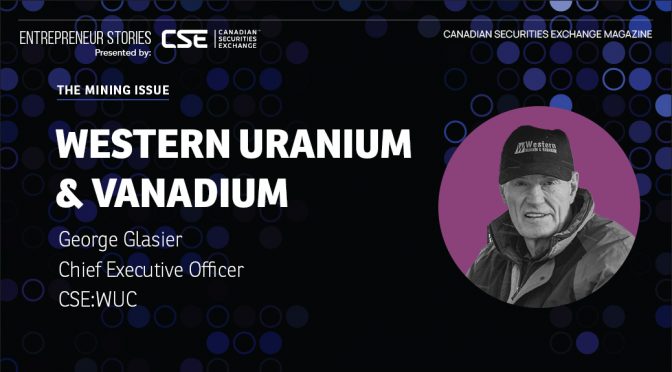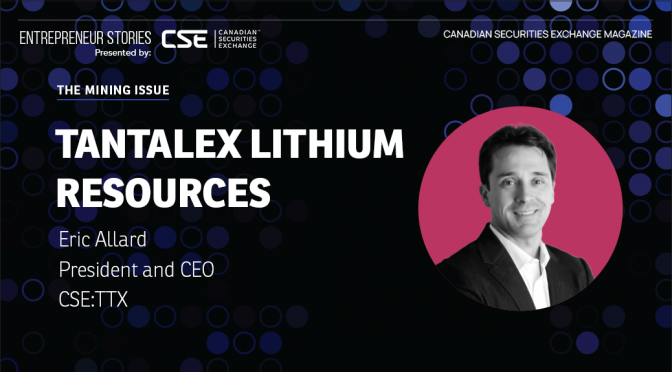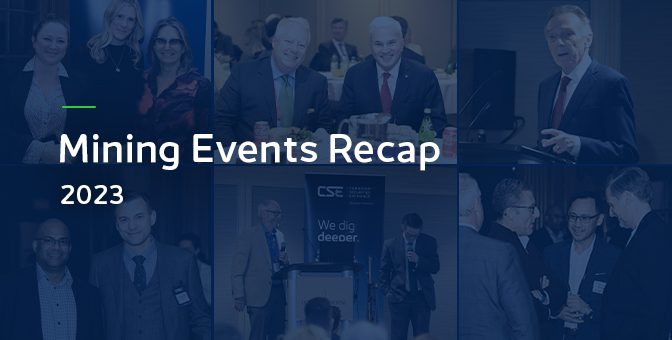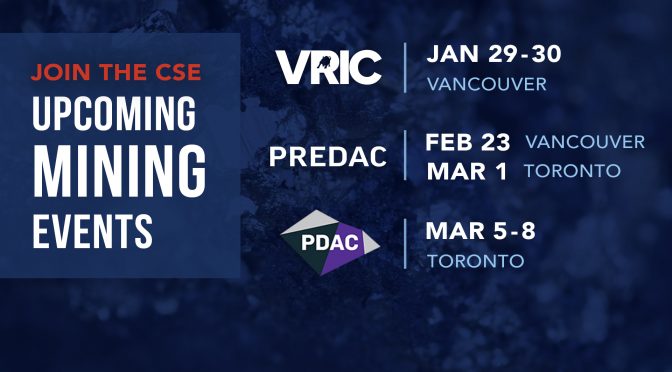This year’s PDAC promised to be an eventful one – and we’re happy to report it most certainly was. From posh parties to connecting with mining and capital markets leaders from all over the world, the CSE team had an amazing time taking in the full PDAC experience.
While every PDAC convention offers the unique opportunity to take the pulse of what is going on at the ground level and in the boardrooms throughout this industry, this year, the CSE team noted a lot of conversations about ‘electrification’ on and off the show floor.
This year, however, there was an extra special buzz in the air at PDAC. Not only is 2024 a milestone year because we are celebrating our 20th year as a recognized stock exchange, but we can earnestly say that this was one of the best PDAC experiences yet.
By the numbers, we had more CSE listed companies exhibiting at the Investors Exchange than ever before; attendance and engagement at our events was at an all-time high, and the continued popularity of our conference-related content reflects our ongoing commitment to showcasing the entrepreneurial spirit that permeates throughout the Exchange.
Yes, there are certainly headwinds facing segments of the mining industry, particularly as it relates to raising capital. But, judging from the conversations and energy at this year’s show, resilience and perseverance are in abundant supply.
Thanks to the PDAC convention organizers and to everyone who joined us at this year’s show. We look forward to returning again next year!
Read on to find out more about all of our PDAC highlights, including the new and exciting additions to our event slate, as well as to check out photos from all of our adventures on and off the show floor.
CSE Welcomes Australian Delegates
During this year’s PDAC convention, we were thrilled to host our first-ever Australian-focused Market Open at the CSE office in Toronto.
Our friends and colleagues from ‘down-under’ were treated to the highest market opening celebration in Canada and took in the spectacular view of the city from the CSE’s downtown Toronto offices atop First Canadian Place.
Richard Carleton, CSE CEO, shared important updates on the Exchange’s progress toward membership with the World Federation of Exchanges and reiterated the importance of the mining and exploration sector to both the Canadian and Australian capital markets.
In addition, representatives from Canaccord Genuity, Citadel Securities, and Iress provided great perspectives on advancements that will specifically strengthen the global positioning of CSE listed mining issuers as they seek capital and liquidity in Australia and beyond.
Thanks again to all who joined for making our event a success!
Follow the link below to see the replay of our PDAC 2024 Australian Market Open.
Watch Now: PDAC 2024 Australian Market Open at CSE | March 6th, 2024
PDAC Convention
We had a fantastic time engaging in all things mining and exploration at this year’s PDAC convention. As with previous years, the convention was a whirlwind of activity however one of the big highlights for our team was meeting with CSE listed issuers on and off the show floor.
This year, a record number of CSE listed issuers were on the exhibition show floor at the Investors Exchange. It was great to catch up with members from their respective teams and to help them have the best convention experience possible. Here’s the list of CSE listed companies who exhibited this year:
- Abitibi Metals (CSE:AMQ)
- ACME Lithium (CSE:ACME)
- Appia Rare Earths & Uranium (CSE:API)
- Archer Exploration (CSE:RCHR)
- Asante Gold (CSE:ASE)
- BacTech Environmental (CSE:BAC)
- Cascade Copper (CSE:CASC)
- Cerro de Pasco Resources (CSE:CDPR)
- Class 1 Nickel and Technologies (CSE:NICO)
- Core Nickel (CSE:CNCO)
- Emperor Metals (CSE:AUOZ)
- EnviroMetal Technologies (CSE:ETI)
- Exploits Discovery (CSE:NFLD)
- Foremost Lithium Resource & Technology (CSE:FAT)
- Forte Minerals (CSE:CUAC)
- Go Metals (CSE:GOCO)
- Golden Cariboo Resources (CSE:GCC)
- Headwater Gold (CSE:HWG)
- Inflection Resources (CSE:AUCU)
- Kuya Silver (CSE:KUYA)
- Nevada Lithium Resources (CSE:NVLH)
- Northstar Gold (CSE:NSG)
- Nuclear Fuels (CSE:NF)
- Pampa Metals (CSE:PM)
- Peloton Minerals (CSE:PMC)
- PTX Metals (CSE:PTX)
- Prismo Metals (CSE:PRIZ)
- Red Metal Resources (CSE:RMES)
- Renforth Resources (CSE:RFR)
- Sassy Gold (CSE:SASY)
- Silver Hammer Mining (CSE:HAMR)
- Talmora Diamond (CSE:TAI)
- Volta Metals (CSE:VLTA)
- Western Uranium & Vanadium (CSE:WUC)
Additionally, our role as an official media partner enabled us to distribute the Mining Issue of Canadian Securities Exchange Magazine to our many booth visitors and to all convention attendees. If you missed out on snagging a copy at the event, you can read the latest Mining Issue online here.
See you all at next year’s PDAC!
Read Now: Canadian Securities Exchange Magazine – The Mining Issue – March 2024
CSE Investor Luncheon
The highly-sought after CSE Investor Luncheon brought together various members of the investment and capital markets communities and an exciting cross-section of mineral exploration companies listed on the CSE for company presentations, a special panel, and networking.
Rob Cook, the CSE’s Senior Vice President of Market Development, was back to emcee the pitch presentations. CSE listed issuers continue to step up their game every year, with some of the most proficient pitches yet. Thank you to the companies that participated, including:
- Abitibi Metals (CSE:AMQ)
- First Phosphate (CSE:PHOS)
- Foremost Lithium Resource & Technology (CSE:FAT)
- Headwater Gold (CSE:HWG)
- Highlander Silver (CSE:HSLV)
- Inflection Resources (CSE:AUCU)
- Kuya Silver (CSE:KUYA)
- Myriad Uranium (CSE:M)
- Nevada Lithium Resources (CSE:NVLH)
- Nuclear Fuels (CSE:NF)
- Pan American Energy (CSE:PNRG)
- Red Canyon Resources (CSE:REDC)
- Rush Rare Metals (CSE:RSH)
- Tantalex Lithium Resources (CSE:TTX)
- Tocvan Ventures (CSE:TOC)
- Western Uranium & Vanadium (CSE:WUC)
The second portion of the afternoon was a panel discussion, where attendees enjoyed a very engaging and lively discussion about short selling.
We’d like to thank Terry Lynch, Founder of Save Canadian Mining, who joined Richard Carleton as a special guest on the panel, “Fact-and-Fiction – Short Selling in the Capital Markets.”
Thank you to everyone who joined us, with special thanks to our incredible sponsors Computershare, DealMaker, MNP, Grove Corporate Services, Issuer Direct ACCESSWIRE, Marrelli Trust Company Limited, Marrelli Support Services, DSA Corporate Services, Newsfile, Outlier Marketing, QuoteMedia, Independent Trading Group (ITG), and W.D. Latimer Co. Limited for making the event such a huge success!
We hope you’ll join us again at next year’s Investor Luncheon!
View the album: CSE’s Annual PDAC Investor Luncheon 2024
Mangia Bevi Festa
Once again, we were pleased to co-host Mangia Bevi Festa, our exclusive PDAC networking event, presented in partnership with MNP and Aird & Berlis!
The capacity crowd filled the Pilsner Hall at Steam Whistle Brewing which served as an incredible setting for connecting with friends old and new.
As always, this event was buzzing with conversations about mining and capital markets, and everyone enjoyed connecting and reconnecting over delicious food and drinks on offer.
Thank you to everyone who attended and for making this year’s event another success!

